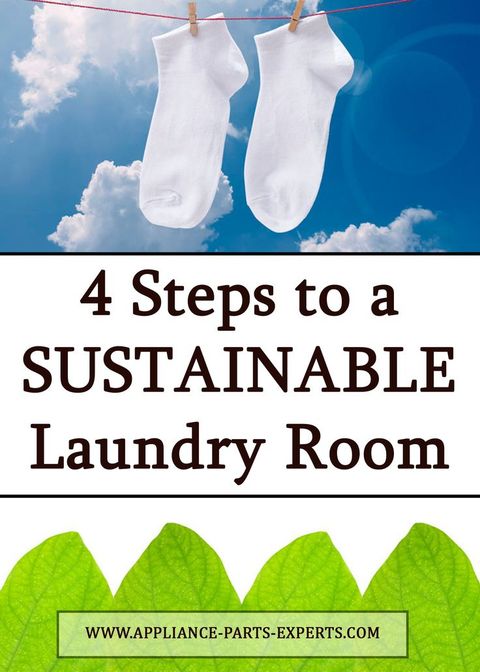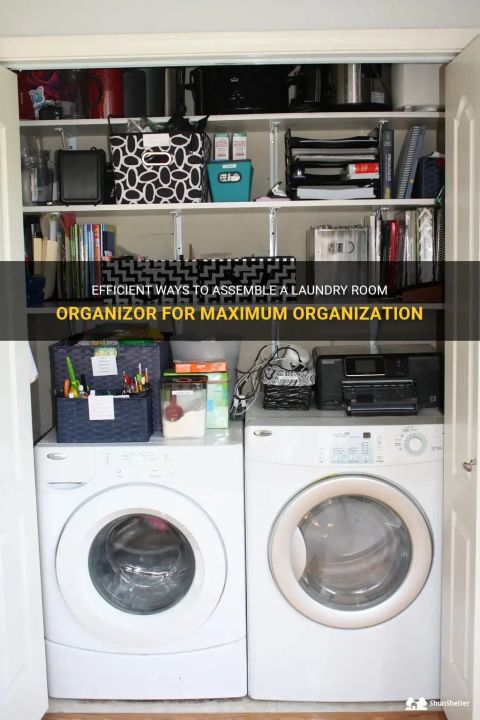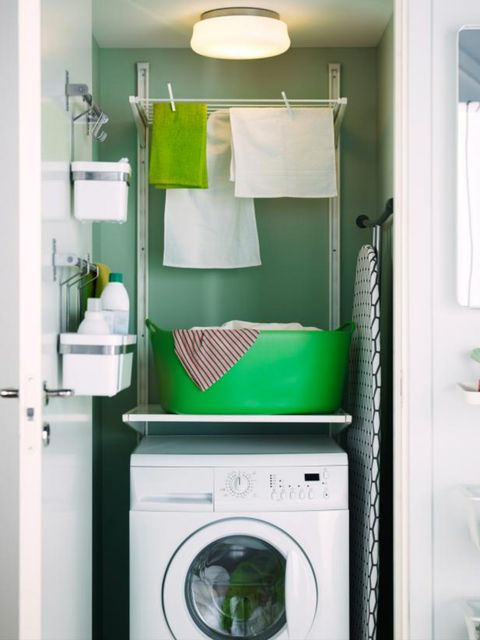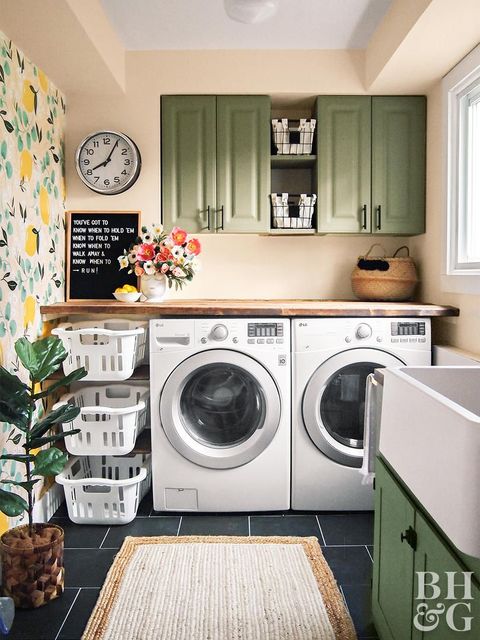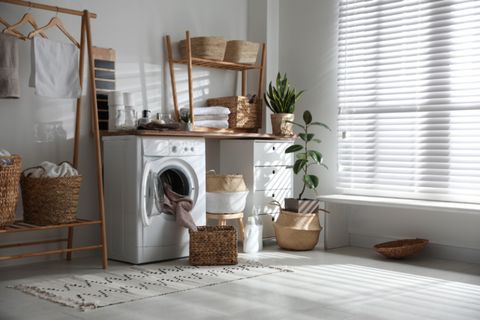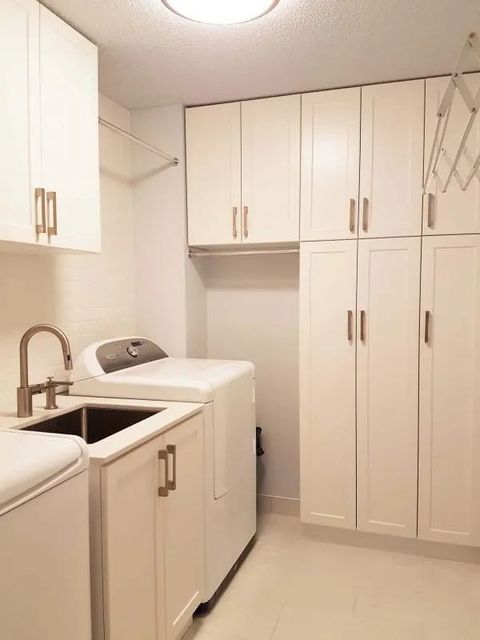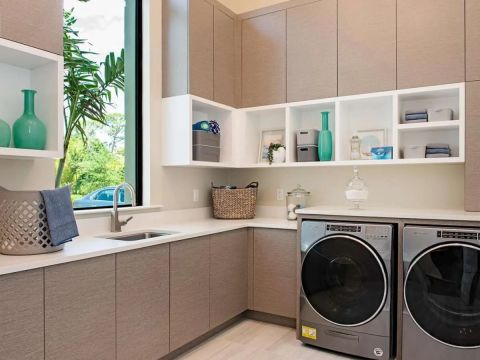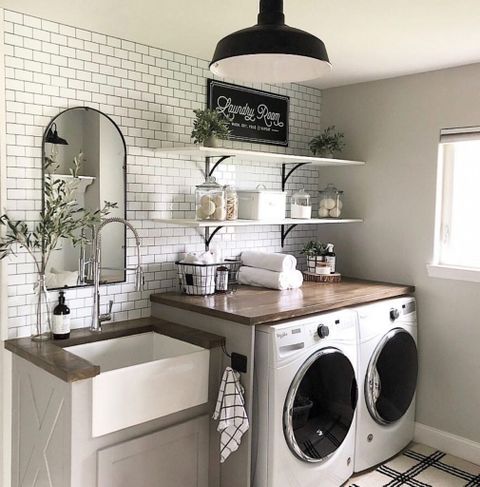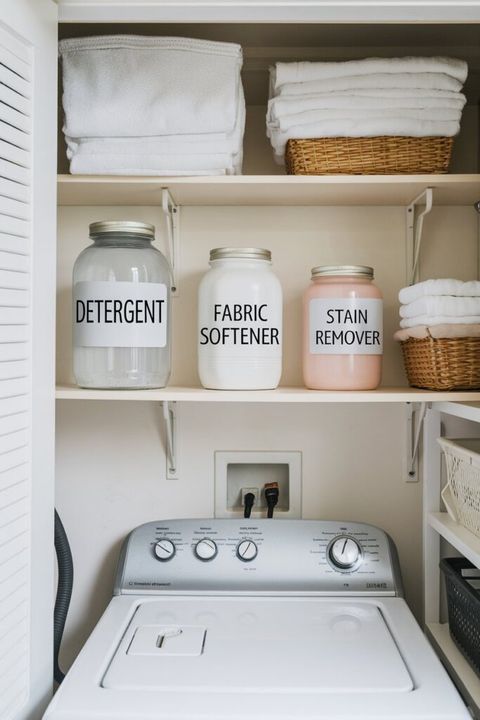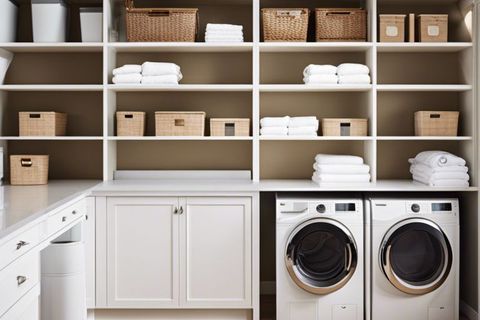For many, the laundry room is often a place of chaos – piles of clothes, stray socks, and a general sense of disarray. But what if I told you it could be a serene, organized, and even sustainable haven? As someone who has spent years diving deep into the art of home organization and eco-friendly living, I’ve seen firsthand the transformative power of intentional habits. It’s not just about neatness; it’s about creating a space that serves you, reduces your environmental footprint, and brings a little bit of peace to your daily routine. Let’s explore how to make your laundry area a true sanctuary.
Think about it. Your laundry area, whether it’s a dedicated room, a corner in the basement, or a closet, is a workhorse. It handles everything from muddy play clothes to delicate silks. Yet, it’s often the last place we think about when it comes to organization or sustainable practices. We rush in, toss things around, and rush out. This hurried approach not only leads to disorganization but also misses opportunities to adopt greener habits that benefit both our wallets and the planet. This article isn’t just about decluttering. It’s about a holistic approach to creating a functional, beautiful, and environmentally responsible laundry space through simple, consistent habits.
Decluttering with Purpose: The First Step to Serenity
Before you can even begin to organize, you must declutter. This isn’t just about throwing things out; it’s about making conscious choices about what truly belongs in your laundry area. Start by pulling everything out. Yes, everything. You’ll be amazed at what you find – lost buttons, empty detergent bottles, random tools, and maybe even a pet toy or two.
Actionable Tips for Decluttering:
- Sort and Purge: Create piles for ‘keep,’ ‘relocate,’ ‘donate,’ and ‘dispose.’ Be ruthless. If it doesn’t serve a direct purpose in the laundry process or bring you joy, it probably doesn’t belong there. For example, do you really need three different types of stain removers if one works for everything?
- Check Expiration Dates: Many laundry products, especially eco-friendly ones, have shelf lives. Get rid of anything that’s expired or near its end.
- Consolidate: If you have multiple half-empty bottles of the same product, combine them into one. This saves space and reduces waste. Think of those nearly empty fabric softener bottles – combine them. It’s a small thing, but it helps.
Smart Storage Solutions: Making Every Inch Count
Once you’ve decluttered, it’s time to think about how to store what you’re keeping in an intelligent, accessible way. The goal is to make it easy to find what you need, when you need it, which naturally encourages sustainable habits like using the right amount of product or sorting clothes properly.
Sustainable Storage Ideas:
- Vertical Space is Your Friend: Shelves, wall-mounted racks, and stackable bins can double or even triple your storage capacity. Look for bamboo or recycled plastic options. For instance, a simple over-the-door hanger can hold your ironing board and iron, keeping them off the floor.
- Clear, Reusable Containers: Transfer bulk detergents, dryer balls, and clothes pins into clear, airtight containers. This not only looks tidier but also helps you see when you’re running low, preventing impulse buys and encouraging bulk purchasing – a key sustainable practice. Mason jars work wonders for smaller items like clothespins or stain sticks.
- Designated Bins for Sorting: Have clearly labeled hampers or bins for different types of laundry (darks, lights, delicates, hand-washables). This makes pre-sorting a breeze and helps prevent accidental color bleeds, saving water and energy by avoiding re-washes. I’ve found that three simple, stackable bins labeled ‘Whites,’ ‘Colors,’ and ‘Delicates’ make a huge difference.
Embracing Eco-Friendly Laundry Products: A Conscious Choice
This is where sustainability truly shines. The products we use have a significant impact on our environment, from the chemicals they contain to their packaging. Making informed choices here is paramount to creating a truly sustainable laundry haven.
Sustainable Product Swaps:
- Concentrated or Bulk Detergent: These options reduce packaging waste and often contain fewer fillers. Many brands offer refillable pouches or large containers. Look for brands that are transparent about their ingredients and sourcing.
- Wool Dryer Balls: Ditch the single-use dryer sheets! Wool dryer balls reduce drying time, soften clothes naturally, and are reusable for hundreds of loads. Plus, they’re free of harsh chemicals and artificial fragrances that can irritate skin and pollute the air.
- Natural Stain Removers: Instead of chemical-laden stain removers, try natural alternatives like hydrogen peroxide, white vinegar, or baking soda. These are often just as effective and much safer for your family and the planet.
- Reusable Lint Traps: Some machines allow for reusable lint filters that you can simply clean, rather than disposing of a single-use sheet. If not, consider composting your lint – yes, you can do that if it’s natural fibers and not loaded with synthetic dryer sheet residue.
Water and Energy Conservation: The Core of Sustainable Laundry
Beyond the products, how you operate your laundry appliances plays a huge role in your environmental footprint. Small adjustments can lead to significant savings in water and energy, translating to lower utility bills and a healthier planet.
Energy and Water-Saving Practices:
- Full Loads Only: This might seem obvious, but resist the urge to run a half-empty machine. Wait until you have a full load to maximize water and energy efficiency. Most modern washing machines are designed to be most efficient when full.
- Cold Water Washing: Around 90% of a washing machine’s energy consumption goes to heating water. Washing in cold water is often just as effective with today’s detergents and drastically cuts down on energy use. It also helps preserve your clothes, preventing fading and shrinking.
- Air Drying When Possible: The dryer is an energy hog. Invest in a drying rack or clothesline for items that don’t need to be machine dried. Not only does this save energy, but it’s also gentler on your clothes and helps them last longer. I love the smell of line-dried sheets – it’s just so fresh.
- Regular Appliance Maintenance: Clean your lint trap before every dryer load. This not only improves efficiency but also prevents fire hazards. Regularly clean your washing machine to prevent mold and mildew buildup, which can affect its performance and your clothes.
Establishing a Routine: Consistency is Key
The best organization and sustainable practices are useless without consistency. Establishing a simple, repeatable routine is what truly transforms your laundry area from a source of stress into a place of calm and efficiency. Human habits are all about repetition, so make it easy on yourself.
Building Your Laundry Routine:
- Designate Laundry Days/Times: Whether it’s once a week or a few times spread out, having a set schedule helps prevent piles from accumulating. For me, Tuesdays and Saturdays are laundry days, no exceptions.
- Sort as You Go: Encourage family members to sort their clothes into the designated bins as they undress. This takes seconds but saves a huge amount of time on laundry day.
- Fold/Hang Immediately: This is a game-changer. Don’t let clean clothes sit in a basket. As soon as they come out of the dryer (or off the line), fold or hang them. This prevents wrinkles and the need for re-ironing, saving energy and time. It also keeps your space looking tidy.
- Wipe Down Surfaces Regularly: A quick wipe-down of surfaces, the top of the machine, and the lint trap after each laundry session keeps your space looking clean and prevents dust and grime buildup. This small habit makes a big difference in maintaining a serene environment.
Educating and Involving the Household: A Collective Effort
Creating a sustainable and organized laundry haven isn’t a one-person job. For long-term success, everyone in the household needs to be on board and understand their role. This is about fostering a shared sense of responsibility and appreciation for the space and its impact.
Tips for Household Involvement:
- Clear Communication: Explain why these changes are important – for the environment, for saving money, and for a more pleasant living space. Kids are often surprisingly receptive to environmental messages.
- Simple Instructions: Make it easy for everyone to follow the new system. Label bins clearly, keep products easily accessible, and have a designated spot for everything.
- Assign Age-Appropriate Tasks: Even young children can help by putting their dirty clothes in the correct hamper. Older kids can learn to load the machine, add detergent, and even fold. This teaches valuable life skills and lightens your load.
- Lead by Example: Be consistent with your own habits. If you’re always sorting and putting things away, others are more likely to follow suit. Praise efforts and celebrate small victories. For instance, ‘Wow, thanks for putting your darks in the right bin, that makes my job so much easier!
Transforming your laundry area into a sustainable and organized haven isn’t an overnight project. It’s a journey of small, consistent steps and mindful choices. By decluttering with purpose, implementing smart storage, choosing eco-friendly products, conserving water and energy, establishing a routine, and involving your entire household, you’re not just tidying a room. You’re cultivating a space that reflects your values, reduces your environmental impact, and brings a sense of calm to a typically chaotic chore. Embrace these habits, and watch as your laundry area becomes not just functional, but truly a haven for you and your family. It’s an investment in your home, your well-being, and our planet.
[sps_html tag=”img” src=”https://marcpauze.com/wp-content/uploads/2025/07/efficient-ways-to-assemble-a-laundry-room-organizor-for-maximum-within.webp” alt=”Efficient Ways To Assemble A Laundry Room Organizor For Maximum … within” style=”width: 100%; height: auto;”]
[sps_html tag=”img” src=”https://marcpauze.com/wp-content/uploads/2025/07/how-to-organize-your-laundry-room-with-more-efficient-sparkling-and-throughout.webp” alt=”How To Organize Your Laundry Room With More Efficient | Sparkling And … throughout” style=”width: 100%; height: auto;”]
[sps_html tag=”img” src=”https://marcpauze.com/wp-content/uploads/2025/07/ultimate-guide-to-laundry-room-organization-in-sustainable-serenity-keeping-your-laundry-room-organized-for-good.jpg” alt=”Ultimate Guide To Laundry Room Organization in Sustainable Serenity Keeping Your Laundry Room Organized for Good” style=”width: 100%; height: auto;”]
[sps_html tag=”img” src=”https://marcpauze.com/wp-content/uploads/2025/07/dream-laundry-room-farmhouse-laundry-room-laundry-room-makeover-throughout-sustainable-serenity-keeping-your-laundry-room-organized-for-good.jpg” alt=”Dream Laundry Room, Farmhouse Laundry Room, Laundry Room Makeover … throughout Sustainable Serenity Keeping Your Laundry Room Organized for Good” style=”width: 100%; height: auto;”]
[sps_html tag=”img” src=”https://marcpauze.com/wp-content/uploads/2025/07/4-steps-to-a-sustainable-laundry-room-laundry-room-sustainability-pertaining-to.jpg” alt=”4 Steps To A Sustainable Laundry Room | Laundry Room, Sustainability … pertaining to” style=”width: 100%; height: auto;”]

